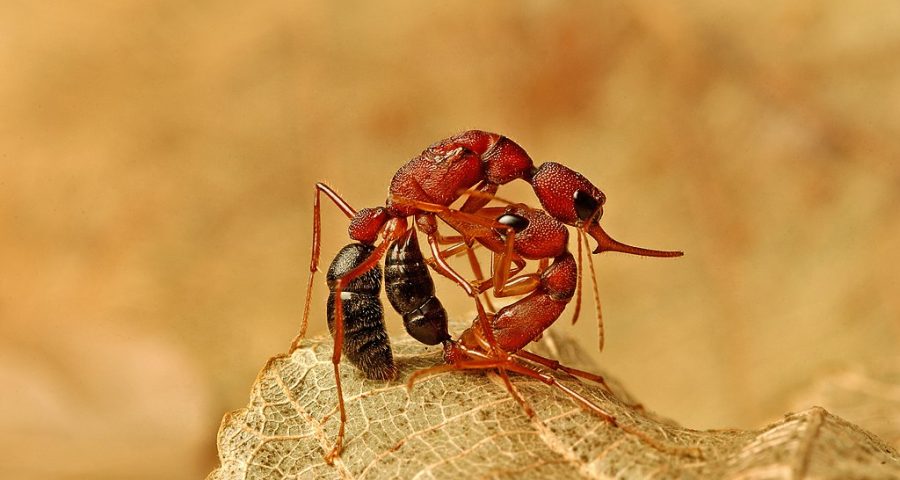Does being a mom make you lose brain cells?
This is Sandra Tsing Loh with the Loh Down on Science.
The queen is usually the only ant who gives birth in a colony. And most queens are born, not made. But Indian Jumping Ants are special! Some female worker ants can regain their reproductive abilities. They’re known as “gamergates.”
When a queen dies, gamergates enter a month-long competition to replace her and prove themselves — in Bridgerton-speak — a “diamond of the first water.” In the end, the winner gets the crown!
Downside? Gamergates see an almost twenty percent reduction in brain size in this reproduction bid. Do the losers ever recover their lost brain mass?
To find out, Clint Penick from Kennesaw State and colleagues looked at these tiny brains with special microscopes. They then made digital reconstructions to find brain mass. Turns out, reverted worker ants increased their brain mass by about the SAME twenty percent!
Humans share some brain traits with these ants. Studying them might help us unlock ways to prevent diseases like dementia.
Now that’s something to ANT-icipate!
Reference: Penick, C. A., Ghaninia, M., Haight, K. L., Opachaloemphan, C., Yan, H., Reinberg, D., & Liebig, J. (2021). Reversible plasticity in brain size, behaviour and physiology characterizes caste transitions in a socially flexible ant (Harpegnathos saltator).

